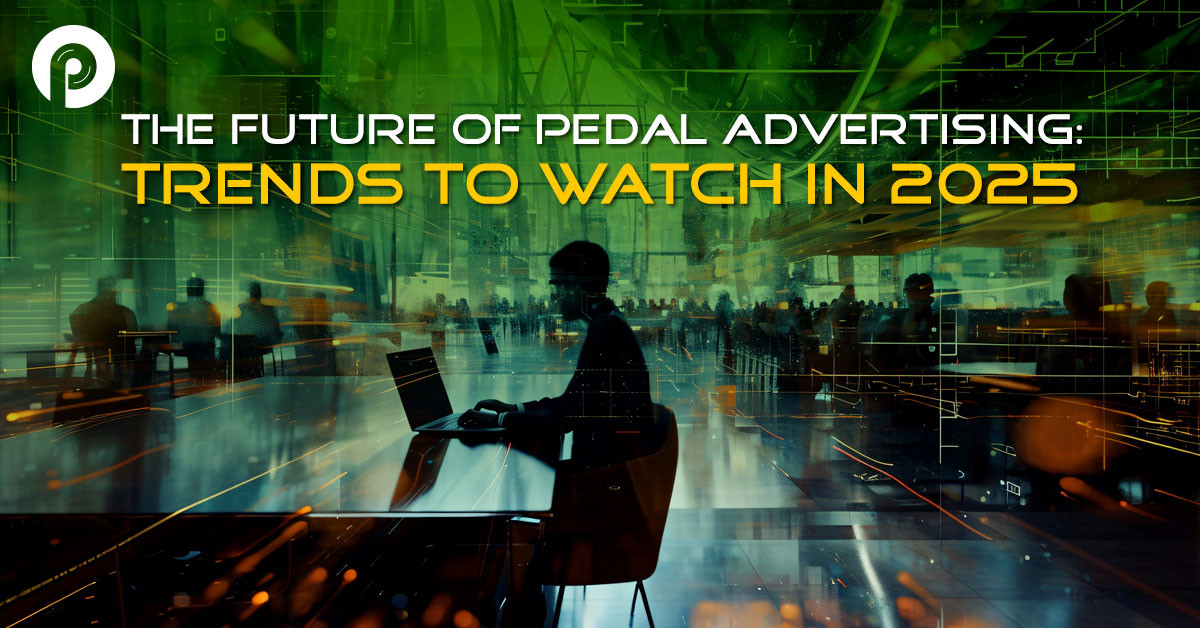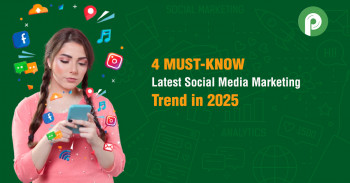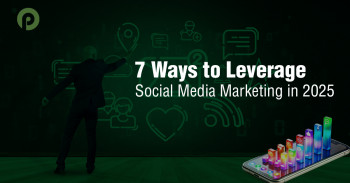Future of Pedal Advertising
2025-01-07 4048

In the dynamic world of advertising in Nepal, staying ahead of the curve is imperative for brands aiming to capture consumer attention and drive engagement. As we navigate through the digital age, the realm of pedal advertising is undergoing significant transformations. With innovations like metaverse marketing and AI integration reshaping the landscape, let's delve deeper into the trends that will define the future of pedal advertising in 2025.
1. Metaverse Marketing: Redefining Brand Experiences
The concept of the metaverse has transcended from science fiction to reality, presenting unprecedented opportunities for marketers. In 2025, metaverse marketing is set to revolutionize pedal advertising by offering immersive brand experiences that blur the lines between physical and virtual realms.
Virtual Showrooms: Pedal advertising in the metaverse extends beyond traditional billboards, offering virtual showrooms where consumers can explore products and services in a dynamic, interactive environment. Picture cycling through a digital cityscape and stumbling upon a pop-up shop, where you can virtually try on apparel or test-drive the latest gadgets—all while pedaling through the metaverse.
Interactive Campaigns: Brands are leveraging the metaverse to create engaging, interactive campaigns that resonate with audiences on a deeper level. Customers can embark on virtual adventures, collecting rewards and unlocking exclusive offers as they pedal through immersive digital landscapes. These interactive experiences foster brand engagement and leave a lasting impression on consumers.
Brand Integration: Within the metaverse, cross-powered billboards seamlessly blend into the virtual environment, offering subtle yet effective brand placements. Imagine cycling through a bustling metropolis and encountering animated ads that seamlessly integrate with the surroundings, creating an immersive experience for end consumers.
2. AI Integration: Enhancing Personalization and Efficiency
Artificial Intelligence (AI) has emerged as a game-changer in marketing, enabling brands to deliver personalized experiences and optimize campaign performance. In 2025, AI integration is reshaping pedal advertising by enhancing personalization, efficiency, and targeting capabilities.
Personalization: AI algorithms analyze vast amounts of data to predict consumer preferences and deliver tailored content to cyclists. Pedal advertising can make your ads dynamically adjust based on factors such as location, weather conditions, and user behavior, ensuring relevance and resonance with the target audience.
Automation: AI-powered tools streamline campaign management and optimization, freeing marketers from manual tasks and enabling them to focus on strategic initiatives. From content generation to audience segmentation, AI automation enhances efficiency and effectiveness across the board.
Programmatic Advertising: Programmatic advertising, powered by AI, enables real-time bidding and ad delivery, ensuring optimal placement and targeting for pedal advertising campaigns. AI algorithms optimize ad placements based on audience demographics, interests, and behavior, maximizing ROI and engagement.
3. Cross-Channel Marketing: Seamlessly Engaging Audiences Across Platforms
In 2025, cross-channel marketing is essential for brands looking to reach and engage audiences effectively. Pedal advertising is embracing cross-channel strategies, leveraging multiple platforms and touchpoints to deliver cohesive brand experiences to end consumers.
Mobile Integration: End consumers use a variety of devices, from smartphones to smartwatches, during their journeys. Brands must adapt their ads to reach users across these platforms, ensuring a seamless and consistent experience across devices.
Voice-Activated Ads: Voice-activated ads leverage AI technology to provide real-time recommendations and assistance to end consumers as they make their decisions through urban landscapes. Whether it's suggesting nearby attractions or offering product recommendations, voice-activated ads enhance the experience and drive engagement.
Dynamic Creatives: AI-powered dynamic creatives adjust ad content in real-time based on factors such as weather conditions, time of day, and user preferences. End consumers may encounter ads promoting refreshing beverages on a hot summer day or showcasing waterproof gear during rainy weather, enhancing relevance and effectiveness.
4. Authenticity and Community Engagement: Building Meaningful Connections
In an era characterized by authenticity and community-centric values, brands must focus on building genuine connections with their audience. Pedal advertising offers a unique opportunity to engage cyclists and foster a sense of community through authentic, relatable campaigns.
User-Generated Content: Encouraging end consumers to share their experiences creates authentic, user-generated content that resonates with wider audiences. Brands can leverage hashtags and social media contests to encourage user participation and showcase the diverse experiences.
Local Influencers: Collaborating with local influencers enables brands to tap into community networks and build credibility and trust easily. Local influencers can share their passion and endorse brands authentically, driving engagement and loyalty among their followers.
Community Partnerships: Partnering with local organizations and community groups allows brands to integrate advertising into community events and initiatives easily. Whether it's sponsoring charity programs or supporting environmental causes, community partnerships demonstrate a brand's commitment to social responsibility and engagement.
Conclusion
As we look ahead to 2025 and beyond, the future of pedal advertising is defined by innovation, integration, and authenticity. By embracing trends like metaverse marketing and AI integration, brands can create immersive, personalized experiences that resonate with end consumers and drive engagement. Cross-channel strategies and community engagement initiatives further enhance the impact of advertising, fostering meaningful connections and driving brand loyalty. As the marketing landscape continues to evolve, staying ahead of the curve and embracing emerging trends will be crucial for brands looking to unlock the full potential of advertising in 2025 and beyond.




